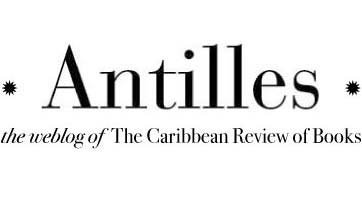Naipaul-spotting
As I mentioned in my last post, V.S. Naipaul is once again starring in the literary pages of newspapers on three continents, thanks to the long-awaited publication of Patrick French's authorised biography, The World Is What It Is. "It's hard to open a newspaper without seeing the face of Sir Vidia," said John Walsh in the Independent last week, and even the most dedicated Naipaul-philes must be getting a little weary now of the flood of newspaper articles--many of them with wonderfully scandalous headlines like "I Killed My Wife, Says Nobel Laureate". But for the sake of Antilles readers who have not been paying attention to this blitz, here's a roundup of some of the main reviews, features etc--rest assured there will be more to come.
- "The biggest surprise in Patrick French's colourful biography of Sir Vidia Naipaul is that its biographee should have allowed it to be published," says John Carey in his review in the Times. "For it exposes him as an egotist, a domestic tyrant and a sadist."
- "French's method is phenomenological: he presents the evidence as he finds it, in his subject's words or the words of those who knew him, keeping psychological analysis to a minimum, and intervening only occasionally to add his discreet opinions," suggests Aamer Hussein in the Independent; he also gets the name of one of Naipaul's novels wrong. That should be In a Free State, not A State of Independence.
- "Few people expected Patrick French's biography to be a full account of the writer's life.... It turns out that doubters underestimated French," says Christopher Tayler in the UK Guardian.
- "This is an excellent biography which does nothing to diminish one's respect for Sir Vidia and leaves one liking him much more than I had expected -- a judgement he might himself dismiss as impertinent." That's Allan Massie in the Literary Review, expressing what is surely a minority view.
- The Economist's review shows a blithe disregard for fact-checking (who were the Dutch settlers that supposedly exterminated Trinidad's indigenous population in the sixteenth century, and where exactly are the Greek immigrants that supposedly arrived sometime thereafter?), but the anonymous reviewer is at least tenderhearted enough to be moved to tears by the biography's closing pages.
- In the India Business Standard, Nilanjana S. Roy suggests in her thoughtful essay that "the real tragedy of Naipaul is not that he’s produced middling work in his later years -- this happens, all too often, to even the best of writers, and his earlier works will continue to find an audience. It’s that Naipaul has been overtaken by the banality he has so often condemned."
- And my favourite line in all this Naipaul coverage comes from a short essay by former Granta editor Ian Jack, writing in the Guardian. "Naipaul gave French access to everything, including Pat's diaries (which he sold to an American university without having read them), and the biography must be the frankest authorised biography of anyone alive and in possession of their senses. Thanks to the New Yorker, we knew about the prostitutes; now we learn about the sexual violence. We are none of us straight pieces of timber but the woodshed usually has locks."
Meanwhile, readers impatient to get hold of the book can satisfy themselves for the time being with "Leaving the ghetto", an article by French on Naipaul's time with the BBC Caribbean Voices programme, in the New Statesman; and the Telegraph has run a couple of substantial excerpts from the biography, on Naipaul's early relationship with his first wife Pat, and his onetime friendship with Paul Theroux. You can also hear French reading a passage from his book here, at the Telegraph website.



